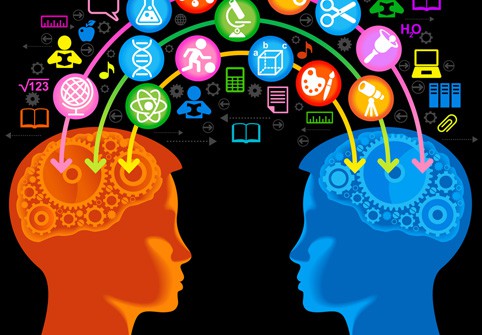Digital Learning is Critical for Move to Learner-Centered Instruction

The Alliance for Excellent Education is a Getting Smart advocacy partner. Executive Director Bob Wise co-chairs Digital Learning Now, a state policy framework for the future. The Alliance released an important digital learning report today.
# # #
Preparing Today’s Students for Success Requires Moving from Teacher-Directed, One-Size-Fits-All Model to Personalized, Student-Focused Instruction, New Report Finds
Washington, DC – Preparing all students to succeed in today’s increasingly complex world requires a shift from a teacher-centric culture to learner-centered instruction that recognizes students’ individual learning needs, according to a new report from the Alliance for Excellent Education.
The report, Culture Shift: Teaching in a Learner-Centered Environment Powered by Digital Learning, examines the support that educators and schools will require to implement genuine teaching practices that are personalized for each student. Digital learning, the report argues, can be a major strategy for enabling teachers to meet varied students’ needs while also supporting necessary cultural shifts in teaching.
“The global economy has raised the stakes for today’s students,” said Bob Wise, president of the Alliance for Excellent Education and former governor of West Virginia. “To help students meet these higher expectations and graduate college and career ready, the nation’s education system must follow the examples of successful schools that provide a more personalized, rigorous, and collaborative learning environment that moves from teacher-directed, one-size-fits-all instructional strategies toward a learner-centered model.”
According to the report, learner-centered instruction is personalized, rigorous, and based on college- and career-ready expectations. It is also collaborative, relevant, and flexible, with learning taking place anytime or anywhere. A true shift to a learner-centered environment powered by effective technology requires a strong school culture that embodies, encourages, and focuses on the needs of each student, the report argues. Specifically, Culture Shift maintains that the integration of technology and digital learning, school leadership, and changes in the teaching profession are critical to the transition to this new culture.
According to the report, technology allows educators to increase the use of data on a regular basis and to provide different students with learning experiences that take place at different paces, times, and locations. Students can access more content, courses, and collaborative opportunities while teachers have the opportunity to work with adaptive software, real-time results of assessments, and other evidence-based practices that support more effective and personalized instruction.
Moving to a learner-centered model will require teachers to take on new professional responsibilities and roles in working with students and peers, the report finds. For example, teachers could take on hybrid positions at a school in which they teach students and work in other capacities, including that of a facilitator of learning; user of data and assessments; collaborator, contributor, and coach with peers; and curriculum adapter and designer. To be prepared for these new roles, teachers need support and professional learning opportunities to help them develop new skills that maximize the potential of digital learning and provide models and opportunities for improving practice.
Culture Shift acknowledges that providing effective professional learning opportunities presents a challenge for many districts and schools, but it argues that technology and digital learning can boost opportunities for quality professional learning by increasing flexibility in terms of time, providing access to more specialized courses, and enhancing exposure to peers and colleagues from around the world.
“While many schools and leaders clearly want to move in this direction, the education system faces many traditional challenges that hinder the development of strong cultures in schools,” Wise said. “However, through unified vision, effective application of technology and determination to develop a culture that supports a learner-centered environment, both teachers and students are now most likely to reach their highest achievement levels.”
The report offers the following recommendations for education stakeholders, including state and district leaders, principals, teachers, and community and business leaders, seeking to transition schools to a learner-centered culture:
- Develop a deep understanding of what it means to have a learner-centered environment; identify the potential changes that must be made from the current instructional models; and create opportunities to discuss and observe learner-centered instruction among all parties involved in a student’s learning process.
- Provide school and district leaders with the professional learning opportunities needed to understand how to initiate and grow a strong learner-centered environment in a school.
- Empower school and district leaders to develop collaborative working environments for teachers that set high expectations and provide the support needed for educators and staff.
- Integrate technology and digital learning into the strategic planning and culture discussions within the school to maximize potential to support learner-centered environments, including the use of data and assessments, multiple types of digital content and curriculum, and collaborative opportunities for teachers and students.
- Elevate the profession of teaching by understanding the complexities of teaching very diverse students in a learner-centered environment; establish teacher effectiveness evaluations that support growth and take into account multiple variables; and align professional learning opportunities to evaluations.
Download the complete report at http://www.all4ed.org/files/CultureShift.pdf.
###






Dave
I would love to get behind this, but I read the ALEC report on American education, and they said there is currently no research supporting digital learning at the K-12 level. I've always put a lot of faith in ALEC, as everyone knows they have the best interest of children at heart.
Replies
Tom Vander Ark
That's far from true, Digital learning is a broad topic that includes online and blended learning.
There are studies like this on irtual schools: http://www.gettingsmart.com/gettingsmart-staging/news/study-finds-ar-virtual-academy-students-outperform-public-school-students/
There are summarize of high performing blended schools: http://www.innosightinstitute.org/classifying-k-12-blended-learning/
Here's a summary of blended math games getting big results in 1200 schools http://www.gettingsmart.com/gettingsmart-staging/blog/2012/01/blending-math-games-gets-big-results-in-big-trials/
Thanks, more on this topic later
Tom Vander Ark
Dave, I assembled a few dozen piece of evidence of how/where digital learning is boosting achievement
http://www.gettingsmart.com/gettingsmart-staging/blog/2012/06/how-digital-learning-is-boosting-achievement/